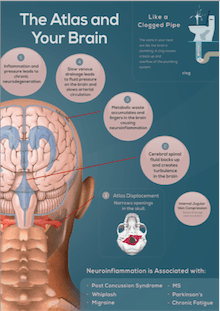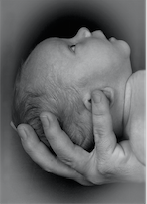The number of children who are being diagnosed with autism or being “on the spectrum” has been on a steep rise. There is so much information out there for parents to sort through and be aware of, it can be quite overwhelming.
So many questions. Perhaps we are getting closer to answers? I believe we are, and this could lead to some much needed help for children on the spectrum and their families.
A new study out of UNC School of Medicine is being published in Biologic Psychiatry this week.
The authors Mark Shen, PHD and Joseph Piven, MD have shown a correlation between a significant increase in the amount of cerebro-spinal fluid (CSF) in the skull at the age of 6 months and 12 months, and a diagnosis of autism at the age of 2. (1)
From the Article:
“Normally, autism is diagnosed when the child is two or three years old and beginning to show behavioral symptoms; there are currently no early biological markers,” said David G. Amaral, director of research at the UC Davis MIND Institute. “That there’s an alteration in the distribution of cerebrospinal fluid that we can see on MRIs as early as six months, is a major finding.”
This IS a major finding. In 2013, Shen was a co-author of another study (1) showing similar findings. This new study was with a much larger group of babies, and was consistent in the outcome. From the article:
"The researchers found that elevated CSF in the brain predicted with nearly 70 percent accuracy which babies would later be diagnosed with autism.”
We know that the Atlas Displacement Complex has a direct effect on proper flow of CSF flow. The long-term, systemic effects of CSF obstruction is an important factor for the health of the person, regardless of age. This can result in many different secondary condition such as Migraines, Chronic Fatigue Syndrom, and others. To read more about the importance of CSF flow, please read our blog post “Your Brain, CSF Flow and your Spine.” Precision Chiropractic is the only facility in Vermont to utilize specific techniques that address the assessment and correction of the Atlas Displacement Complex and the Cranio-Cervical Junction.


Misalignments in the cranio-cervical junction can happen a number of ways. The upper neck of the child can become displaced or misaligned initially from the birth process. Even a normal vaginal birth can place stress or strain upon the infant’s spine or cranium. When birth interventions are used such as forceps or vacuum extraction, or if a c-section was performed, the stress to the child’s spine can be even greater. Later on, children can misalign their spines from toppling over when learning how to walk or ride a bike, falls on the playground, and sports injuries.
It is vital to have a child checked after birth by a structural chiropractor who focuses on the Cranio-Cervical Junction. (Upper Cervical Spine). The importance of checking for structural shifts in the upper cervical spine, and the importance of very precise correction is vital not only for those who are already suffering from secondary conditions, but as a prevention from the development of more serious problems down the road.


The full article about the new study can be found here: http://neurosciencenews.com/
The Study was funded by the National Institute of Health, Autism Speaks, and the Simons Foundation.
(1) Mark D. Shen, Sun Hyung Kim, Robert C. McKinstry, Hongbin Gu, Heather C. Hazlett, Christine W. Nordahl, Robert E. Emerson, Dennis Shaw, Jed T. Elison, Meghan R. Swanson, Vladimir S. Fonov, Guido Gerig, Stephen R. Dager, Kelly N. Botteron, Sarah Paterson, Robert T. Schultz, Alan C. Evans, Annette M. Estes, Lonnie Zwaigenbaum, Martin A. Styner, David G. Amaral, Joseph Piven. Increased Extra-axial Cerebrospinal Fluid in High-Risk Infants who Later Develop Autism. Biological Psychiatry, 2017;
(2) "Early brain enlargement and elevated extra-axial fluid in infants who develop autism spectrum disorder"
Mark D. Shen,1 Christine W. Nordahl,1 Gregory S. Young,1 Sandra L. Wootton-Gorges,2 Aaron Lee,1 Sarah E. Liston,1 Kayla R. Harrington,1 Sally Ozonoff1 and David G. Amaral Brain: Journal of Neurology 2013: 136; 2825–2835
(3) Pomschar A, Koerte I, Lee S, Laubender RP, Straube A, et al. (2013) MRI Evidence for Altered Venous Drainage and Intracranial Compliance in Mild Traumatic Brain Injury. PLoS ONE 8(2): e55447.doi:10.1371/journal.
(4)P. Zamboni, R. Galeotti, E. Menegatti et al., “Chronic cerebrospinal venous insufficiency in patients with multiple sclerosis,”
Journal of Neurology, Neurosurgery and Psychiatry, vol. 80,no. 4, pp. 392–399, 2009.
(5) I. K. Koerte, C. J. Schankin, S. Immler et al., “Altered cerebrovenous drainage in patients with migraine as assessed by phasecontrastmagnetic resonance imaging,” Investigative Radiology, vol. 46, no. 7, pp. 434–440, 2011.

